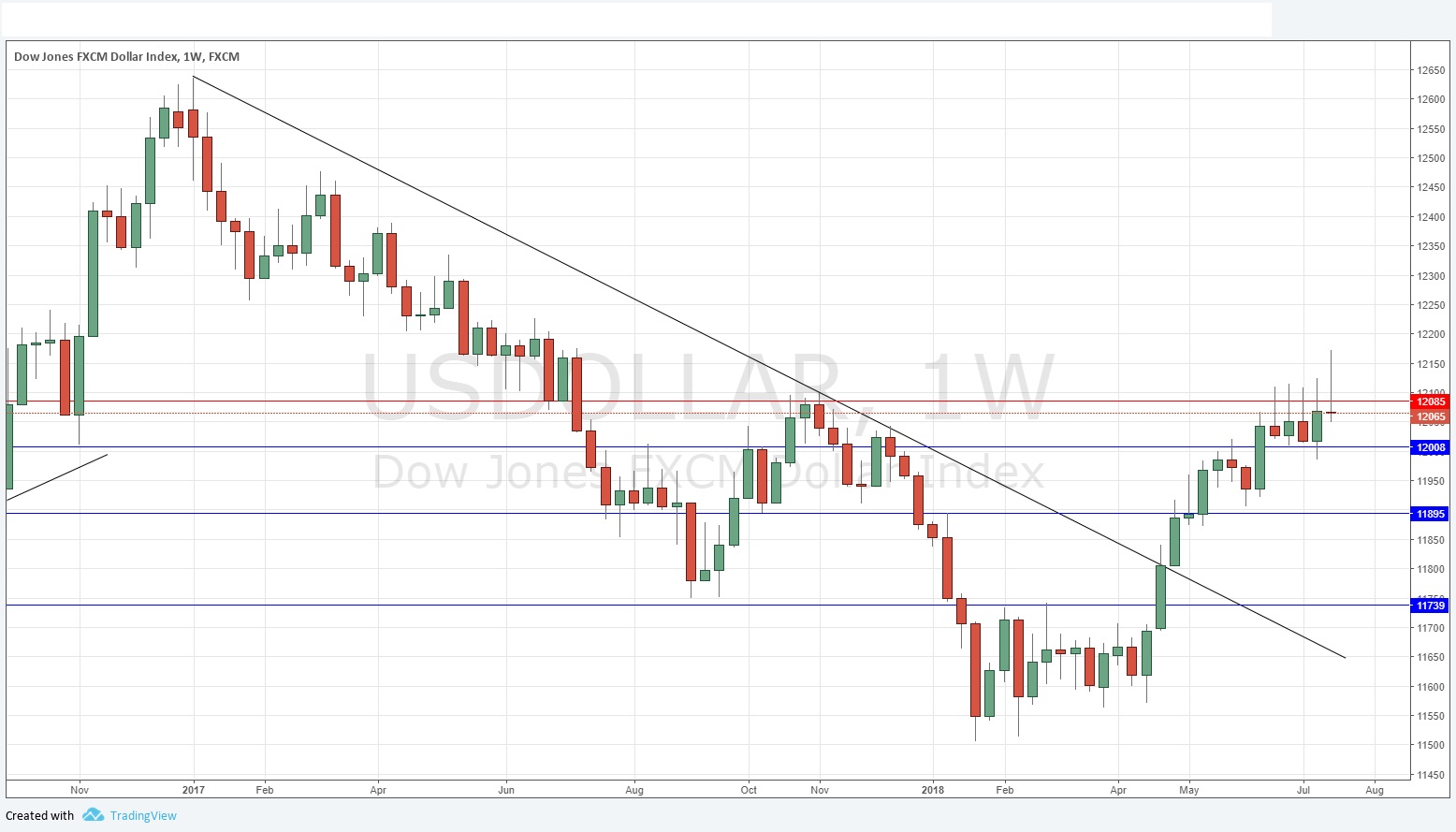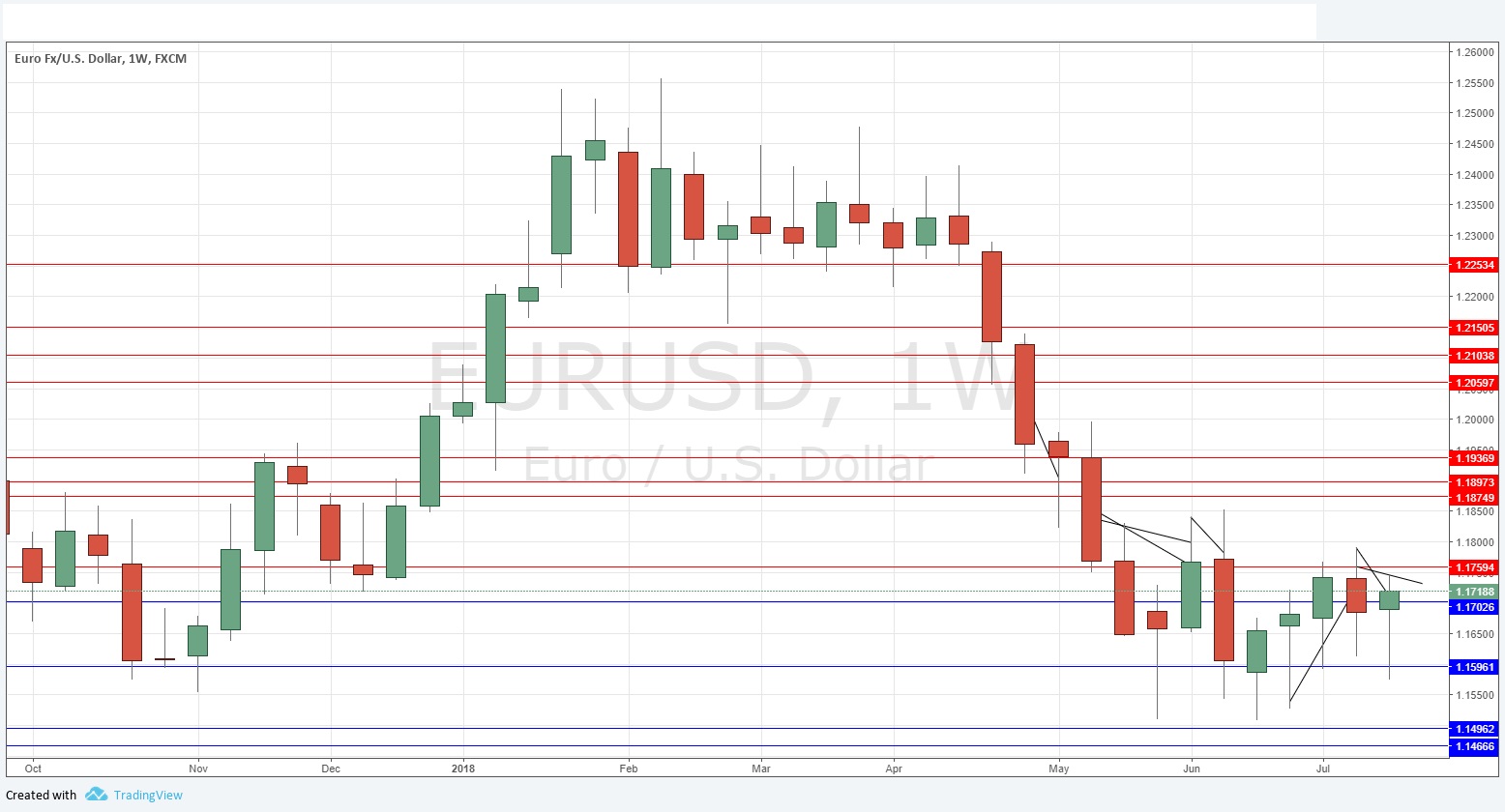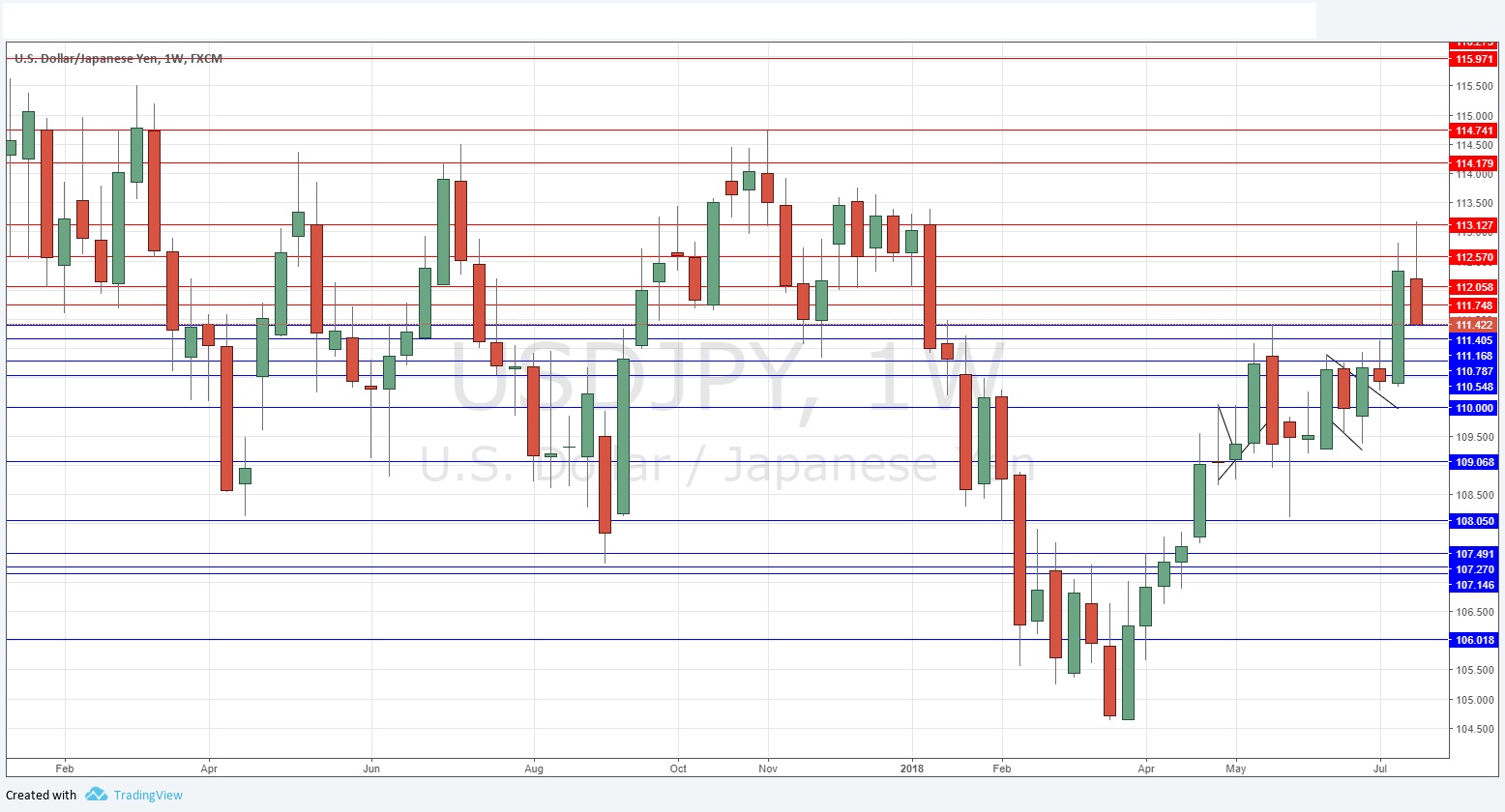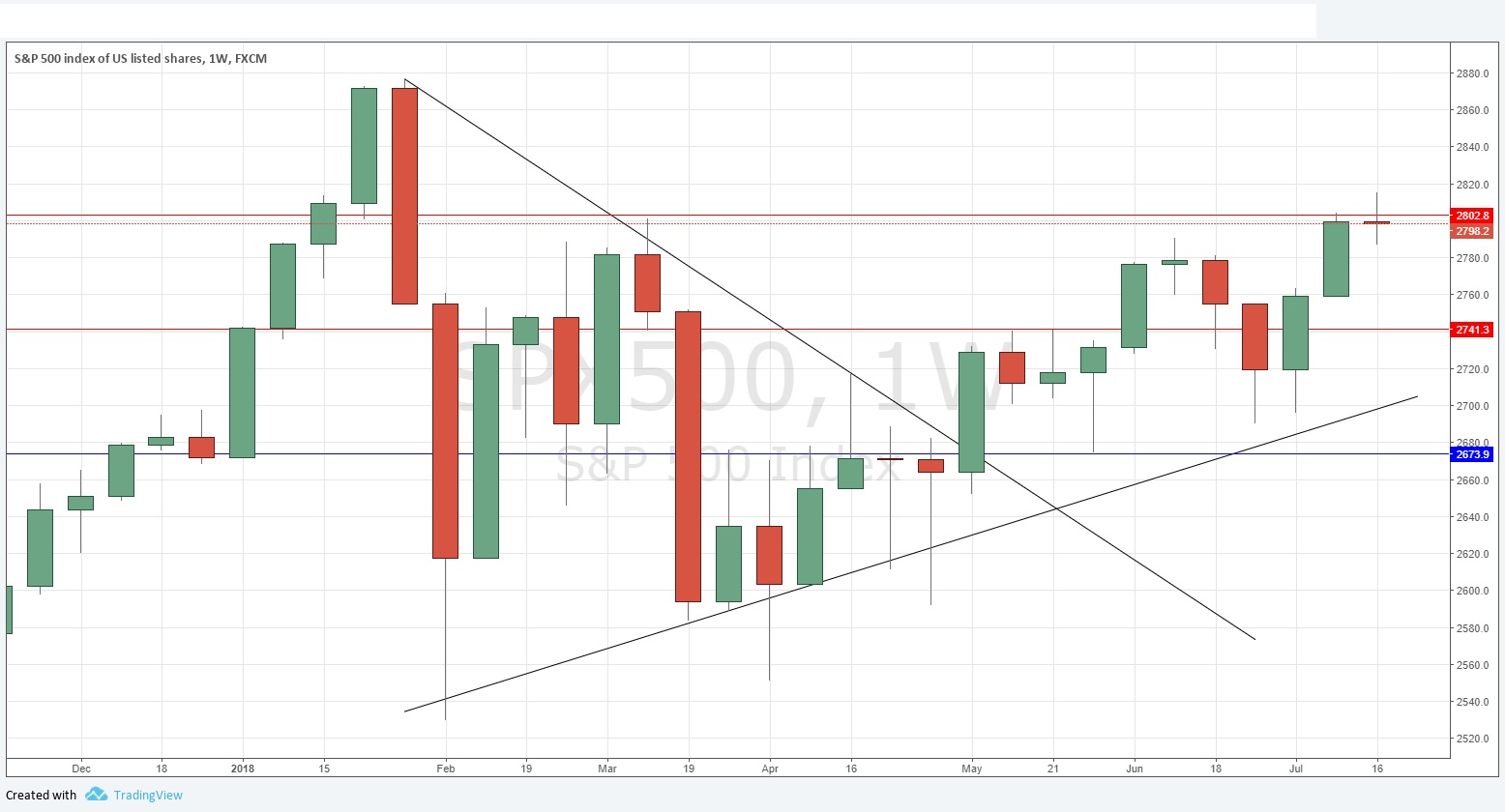The difference between success and failure in Forex trading is very likely to depend upon which currency pairs you choose to trade each week, and not on the exact trading methods you might use to determine trade entries and exits. Each week I am going to analyze fundamentals, sentiment and technical positions in order to determine which currency pairs are most likely to produce the easiest and most profitable trading opportunities over the next week. In some cases it will be trading the trend. In other cases it will be trading support and resistance levels during more ranging markets.
Big Picture 22nd July 2018
In my previous piece last week, I forecasted that the best trade would be long USD/JPY. This worked out badly, with the currency pair falling in value by 0.81%.
Last week saw a rise in the relative value of the Japanese Yen, and a fall in the relative value of the British Pound.
The Forex market has seen a major turnaround, as President Trump has begun to “talk down” the U.S. Dollar. There were also political developments in the U.K. which have increased the instability over the likely final Brexit terms, which has caused a lot of volatility in the British Pound.
Fundamental Analysis & Market Sentiment
Fundamental analysis tends to support the U.S. Dollar, as American economic fundamentals continue to look relatively strong. However, market sentiment has moved strongly against it, as President Trump is signaling a desire for a weaker Dollar, and he may be able to influence the Federal Reserve towards this direction as he will soon be able to make additional appointments.
The week ahead will probably be dominated by central bank input from the European Central Bank, and advance GDP data from the U.S., towards the end of the week. Any further comments from President Trump or his team on the Dollar or currency / trade wars are likely to also have significant impact.
Technical Analysis
U.S. Dollar Index
The weekly price chart below shows that for the fifth week running, the U.S. Dollar Index has ranged between 12085 and 12008, suggesting indecision and a possible bearish reversal. The past week’s candlestick is bearish, forming a classic “pin bar”, although the Index is clearly in a long-term bullish trend. This suggests that the outlook for the U.S. Dollar is very uncertain technically, but there seems to be a strong refusal to rise, which is a bearish sign for the Dollar.
EUR/USD
Although this pair is technically in a downwards trend, it appears to have been basing for several weeks now from a supportive area beginning at about 1.1600. This area was supportive some months ago, as can be seen in the weekly price chart shown below. The series of long lower wicks suggest that there is demand here which is eventually going to push the price upwards, although it seems likely that this might take a while longer to really get going.
USD/JPY
Although the price made a new 6-month high last week, it has fallen sharply, and the week closed right on its low, which is often a bearish sign. Once the Dollar began to fall late in the week, it moved very heavily against the Yen. This suggests that there is a lot of short-term bullish momentum, but there is certainly a long-term bullish trend, and it looks as if the price may now be able to fall a great deal further very quickly. Nevertheless, short trades look more likely to be profitable than long trades here.
S&P 500 Index
The past six months have been choppy for the U.S. stock market, but the 200-day moving average has held even when the market was beginning to look very bearish. After a previous strong rise, last week saw a small and indecisive doji candlestick form, which has failed at the key resistance level shown in the price chart below at 2803. If the price can break strongly above last week’s high, we could see a firm continuation of the bullish movement last week. However, any bad news on trade or tariffs can sink the market in an instant, so it is important to either be very careful, or to take a long-term investment approach.
Conclusion
Bullish on the S&P 500 Index above last week’s high price.




